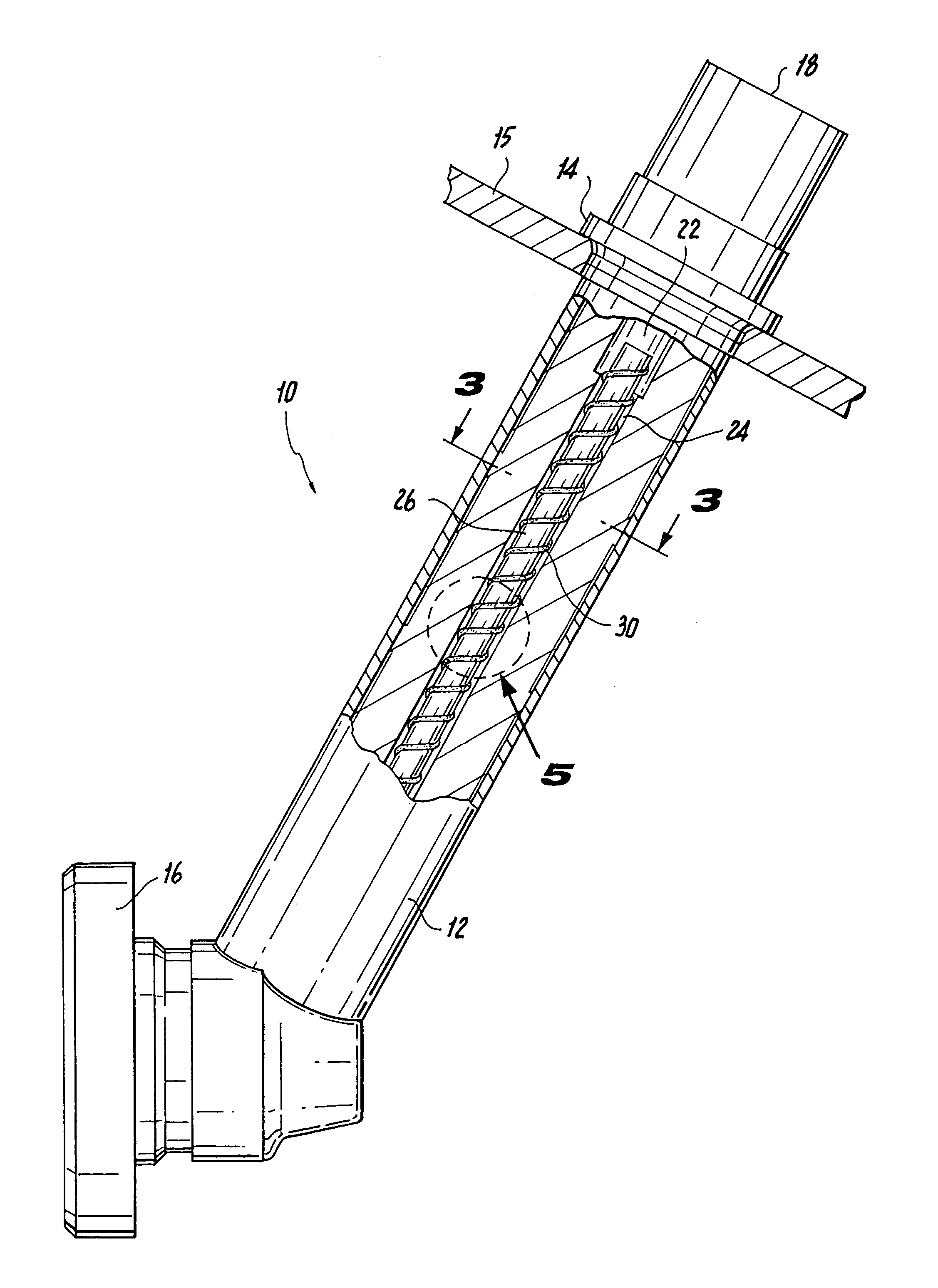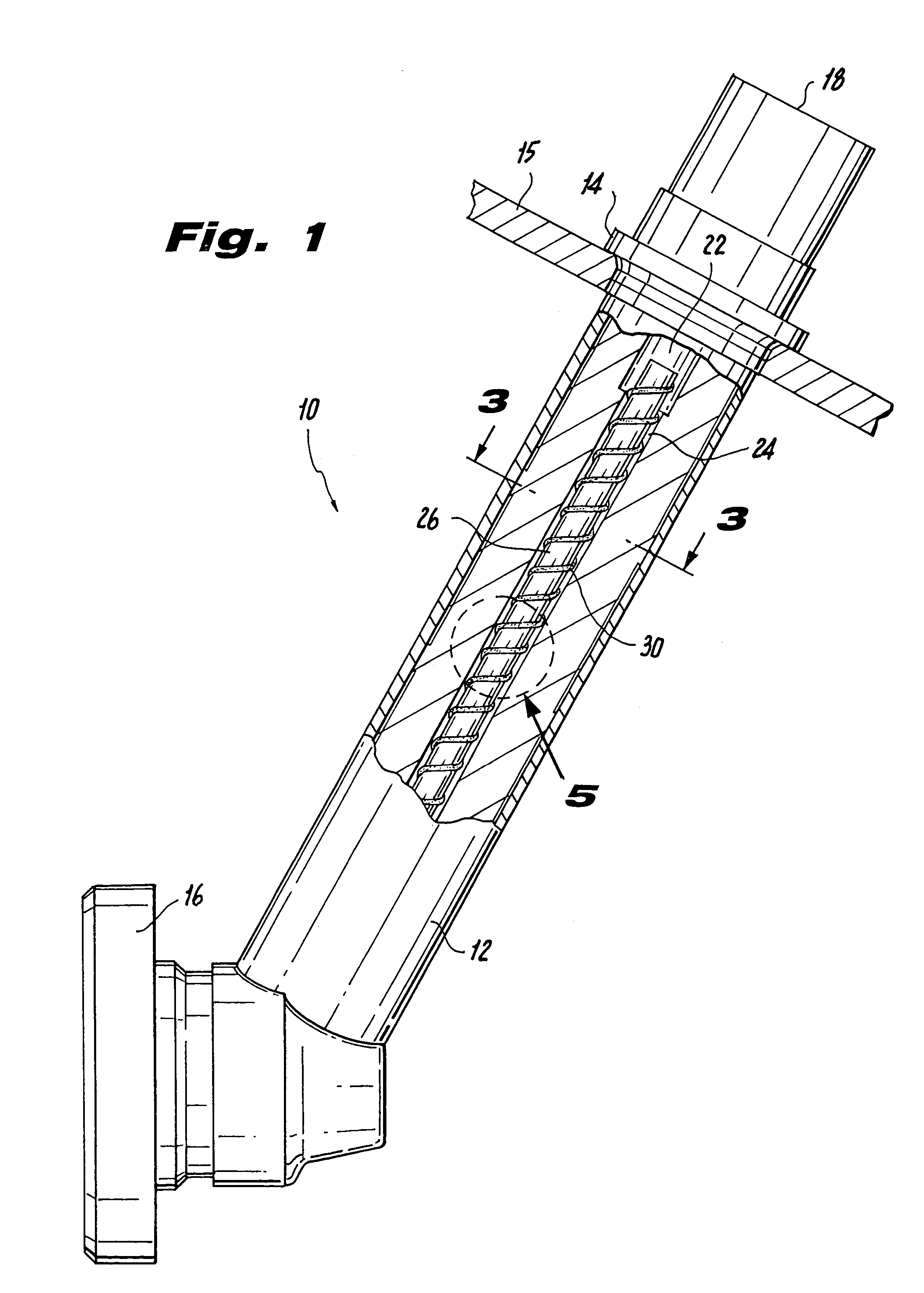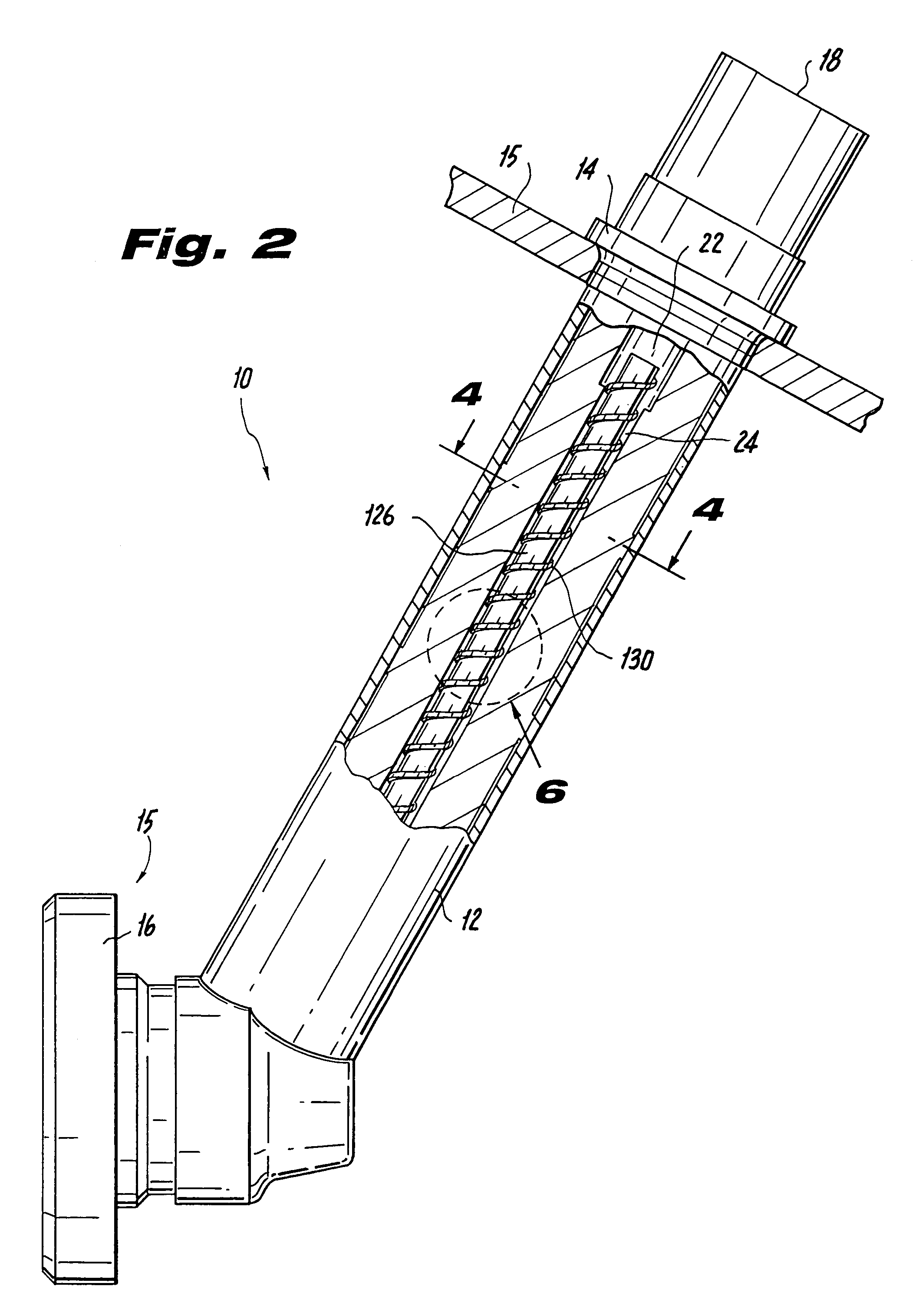Method of forming a fuel feed passage in the feed arm of a fuel injector
a fuel injector and feed arm technology, applied in the field of fuel injectors, can solve the problems of hardware distress and ultimately failure, fuel coking and carbon formation within the fuel feed passage, and increase the pressure drop through the fuel passage undesirably, so as to reduce the increase the fuel flow velocity and the convection heat transfer coefficient, and reduce the effect of initial cross-sectional flow area
- Summary
- Abstract
- Description
- Claims
- Application Information
AI Technical Summary
Problems solved by technology
Method used
Image
Examples
Embodiment Construction
[0022]The subject invention is directed to a new, useful and cost-effective method of forming a fuel feed passage in the feed arm of a fuel injector, primarily used in a gas turbine engine. As described in detail below, the fuel feed passage formed by the method of the subject invention has a relatively large diameter, as compared to a traditional fuel feed passage which has a relatively small diameter designed to produce higher fuel flow velocities and heat transfer coefficients for a given fuel flow rate and fuel temperature. This reduces the wetted wall temperatures within the fuel feed passage. Typically, a larger diameter fuel feed passage, such as that which is initially formed in the injector of the subject invention, will lead to lower fuel flow velocities and lower heat transfer coefficients, resulting in higher wetted wall temperatures. However, this is alleviated in a fuel flow passage formed in accordance with the methodology of the subject invention, by positioning a sh...
PUM
| Property | Measurement | Unit |
|---|---|---|
| temperature | aaaaa | aaaaa |
| convection heat transfer coefficient | aaaaa | aaaaa |
| temperatures | aaaaa | aaaaa |
Abstract
Description
Claims
Application Information
 Login to View More
Login to View More - R&D
- Intellectual Property
- Life Sciences
- Materials
- Tech Scout
- Unparalleled Data Quality
- Higher Quality Content
- 60% Fewer Hallucinations
Browse by: Latest US Patents, China's latest patents, Technical Efficacy Thesaurus, Application Domain, Technology Topic, Popular Technical Reports.
© 2025 PatSnap. All rights reserved.Legal|Privacy policy|Modern Slavery Act Transparency Statement|Sitemap|About US| Contact US: help@patsnap.com



